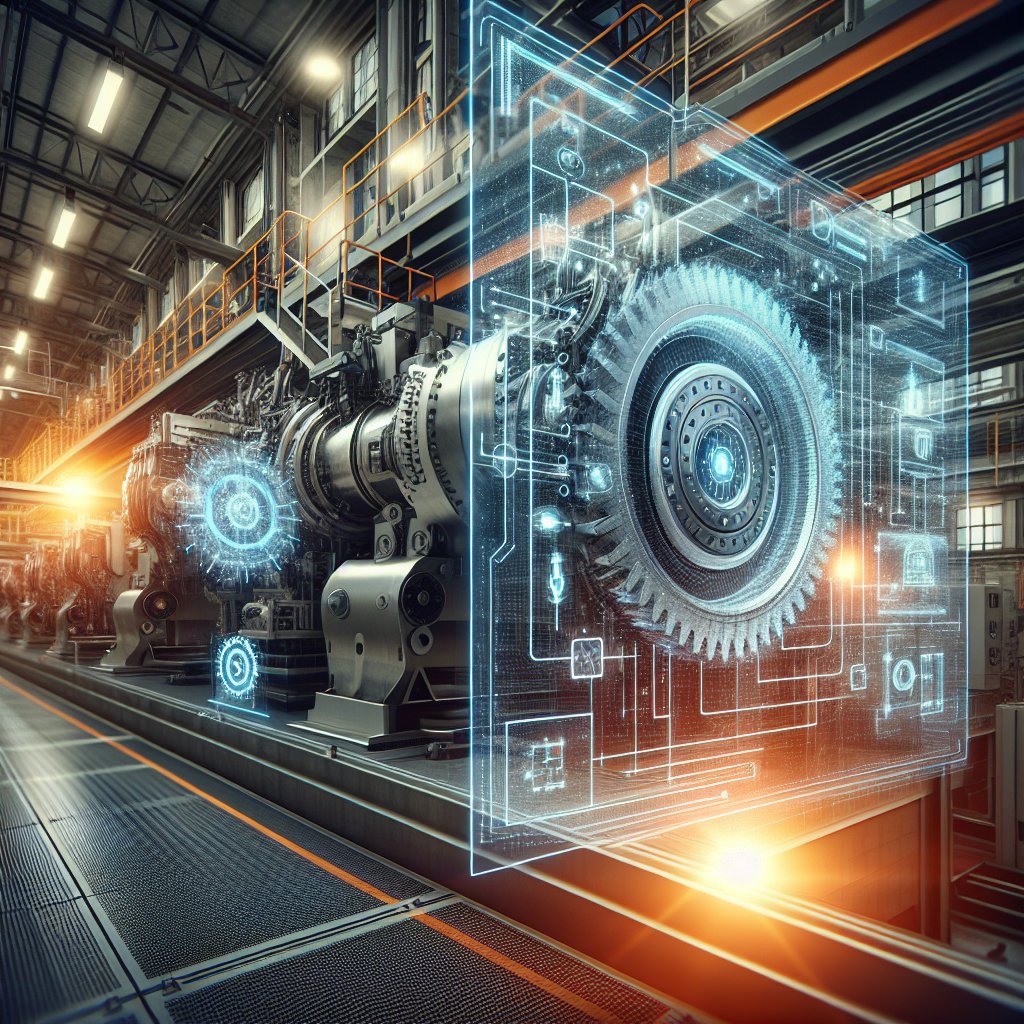
Digital Twin Technology is revolutionizing the way industries approach equipment design and maintenance. By creating virtual replicas of physical assets, businesses can simulate, predict, and optimize performance in real-time, leading to significant improvements in efficiency and cost-effectiveness. This article delves into the intricacies of digital twin technology, exploring its applications, benefits, and the future it holds for industrial sectors.
Understanding Digital Twin Technology
At its core, digital twin technology involves the creation of a digital replica of a physical object or system. This digital counterpart is continuously updated with data from its real-world counterpart, allowing for real-time monitoring and analysis. The concept, although not entirely new, has gained significant traction with advancements in IoT, AI, and data analytics.
The digital twin serves as a bridge between the physical and digital worlds, enabling industries to visualize and interact with their assets in unprecedented ways. By leveraging sensors and data analytics, digital twins provide insights into the performance, efficiency, and potential issues of equipment, allowing for proactive maintenance and design improvements.
Components of Digital Twin Technology
Digital twin technology is composed of several key components that work together to create a comprehensive virtual model:
- Physical Asset: The real-world object or system that is being replicated digitally.
- Digital Model: The virtual representation of the physical asset, created using data and simulations.
- Data Integration: The process of collecting and integrating data from various sources, such as sensors and IoT devices, to update the digital model.
- Analytics and Simulation: The use of advanced analytics and simulation tools to interpret data and predict future performance.
- Feedback Loop: A continuous cycle of data collection, analysis, and feedback to improve the physical asset’s performance.
Applications in Industrial Equipment Design
Digital twin technology is transforming the landscape of industrial equipment design by providing engineers with a powerful tool to visualize and test their creations before they are built. This capability leads to more efficient design processes, reduced costs, and improved product quality.
Enhanced Prototyping and Testing
One of the most significant advantages of digital twins in equipment design is the ability to create and test prototypes virtually. Engineers can simulate various scenarios and conditions, identifying potential design flaws and making necessary adjustments before physical production begins. This not only saves time and resources but also reduces the risk of costly errors.
Moreover, digital twins allow for the testing of equipment under extreme conditions that may be difficult or dangerous to replicate in the real world. This capability ensures that the final product is robust and reliable, meeting the highest standards of safety and performance.
Customization and Personalization
Digital twin technology also enables greater customization and personalization of industrial equipment. By analyzing data from existing equipment and customer feedback, manufacturers can tailor their designs to meet specific needs and preferences. This level of customization enhances customer satisfaction and provides a competitive edge in the market.
Revolutionizing Maintenance Practices
In addition to its impact on design, digital twin technology is revolutionizing maintenance practices across industries. By providing real-time insights into equipment performance, digital twins enable predictive maintenance strategies that minimize downtime and extend the lifespan of assets.
Predictive Maintenance
Traditional maintenance practices often rely on scheduled inspections and repairs, which can be inefficient and costly. Digital twins, however, allow for predictive maintenance by continuously monitoring equipment and identifying potential issues before they lead to failures. This proactive approach reduces unplanned downtime and maintenance costs, while also improving overall equipment reliability.
Predictive maintenance is achieved through the analysis of data collected from sensors and IoT devices, which is then used to predict when maintenance should be performed. This data-driven approach ensures that maintenance is carried out only when necessary, optimizing resource allocation and reducing waste.
Remote Monitoring and Diagnostics
Another significant benefit of digital twin technology is the ability to monitor and diagnose equipment remotely. This capability is particularly valuable for industries with assets located in remote or hazardous environments, where on-site inspections may be challenging or dangerous.
Remote monitoring allows for real-time tracking of equipment performance, enabling quick identification and resolution of issues. This not only improves operational efficiency but also enhances safety by reducing the need for personnel to be physically present in potentially dangerous locations.
The Future of Digital Twin Technology
As digital twin technology continues to evolve, its applications and benefits are expected to expand even further. The integration of AI and machine learning will enhance the predictive capabilities of digital twins, allowing for even more accurate simulations and analyses.
Furthermore, the increasing adoption of IoT and 5G technology will enable more seamless data integration and communication between physical assets and their digital counterparts. This will lead to more comprehensive and detailed digital models, providing even greater insights into equipment performance and maintenance needs.
In conclusion, digital twin technology is poised to play a pivotal role in the future of industrial equipment design and maintenance. By bridging the gap between the physical and digital worlds, it offers unprecedented opportunities for innovation, efficiency, and cost savings. As industries continue to embrace this technology, the potential for transformative change is immense, paving the way for a new era of industrial excellence.

